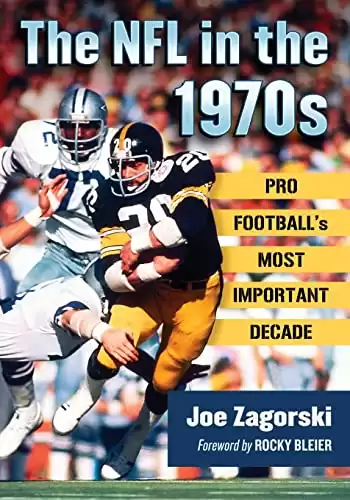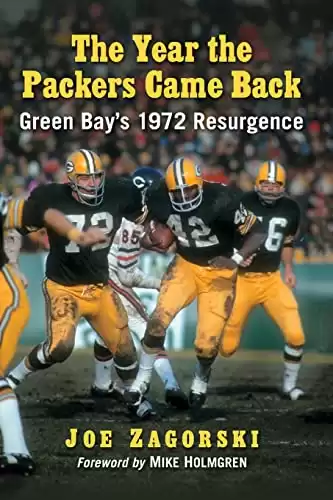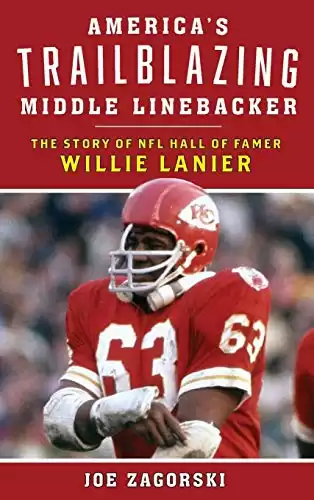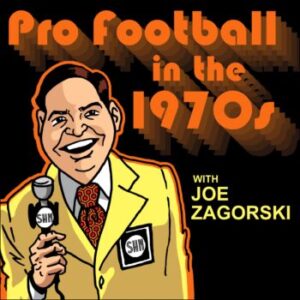During the first half of the 1970s, the Miami Dolphins had a couple of starting safeties who brought their own distinctive talents to the team’s defense. That unit was called the “No-Name Defense,” and appropriately so.
If you asked anyone today “…who were the starting safeties in Miami during their championship years of the early 1970s?”…you would probably see a blank stare or a quizzical shrugging of one’s shoulders as the likely response. But in reality, both free safety Jake Scott and strong safety Dick Anderson should be much more famous and much better remembered today.
2 "No-Name" Safeties
Scott and Anderson played a pair of vital roles in making the Miami defense one of the most formidable in the entire league in the early 1970s. They each had separate talents which when combined, would virtually curtail even the best efforts of opposing offenses. The Dolphins were equally adept at shutting down the passing games of their foes, as well as limiting their opponents’ rushing attacks to meager yardage, week in and week out from 1970 to 1975.
Scott (6-foot-0, 188 pounds) was employed primarily for his quickness, his speed, and his adept movements as a punt and kick returner. He was also one of the most intuitive free safeties in the NFL. He was a quick study, and he knew how to read a receiver’s moves and a quarterback’s eyes.
One benefit that Scott enjoyed came from his head coach, Don Shula, and from his defensive coordinator, Bill Arnsparger. That benefit could be summed up in one word: Freedom. Scott was given carte blanche by his coaches to roam around in the defensive secondary on various zone coverages, break off from any area that he was in, and go toward the direction of the play and of the flight of the ball.
Complimentary Safeties
Scott was a ballhawk, pure and simple, and it didn’t take too long before opposing quarterbacks started to avoid throwing the ball anywhere near him. Because he was a free safety, he often played the role of covering the weak side of the field, and more often, you would see him drifting back way deep into coverage to protect against a long bomb from being completed.
Early in his career in Miami, Scott was very adept at making the first-person miss when he returned punts. His extra effort on punt returns often gave the Dolphins favorable field position.
Anderson (6-2, 196) was the team’s strong safety, and he was just as cerebral as Scott. But a tool in Anderson’s shed that Scott often lacked was Anderson’s ability to hit opposing offensive players with the fury and the velocity of a torpedo. Anderson often had to go up against a greater number of offensive personnel on the strong side of the field. Moreover, Anderson was a devastating hitter, whereas Scott was not.
But that was a good thing for the Dolphin’s defense because having two safeties who possessed two very different storehouses of physical and mental abilities on the field only made the Miami defense more difficult to plan for and to deal with on gameday. Many more physical safeties of that era, such as Jack Tatum of Oakland and Cliff Harris of Dallas, often get much more praise for their hard hits than Anderson. But make no mistake…Anderson was definitely not shy about drilling an opposing wide receiver who dared to run across the middle.
More often than not, it was Anderson who forced the opposing running plays, and it was Anderson who often hit with the power and the leverage of a linebacker.
Both of these safeties were known for their great moments.
In the 1971 AFC Championship Game, Anderson returned a Johnny Unitas interception 62 yards for a touchdown.
The Dolphins prevailed, 21-0 over the Colts to go to their first Super Bowl. A couple of years later on Monday Night Football in front of a national television audience, Anderson intercepted four passes and scored two touchdowns in Miami’s 30-26 victory over the Pittsburgh Steelers. Of those four pickoffs, Anderson returned those passes for a total of 121 yards in overall return yardage.
In Super Bowl VII, Scott intercepted a couple of Billy Kilmer passes to pave the way for the Dolphins’ first-ever Super Bowl victory, a 14-7 triumph over the Washington Redskins. As a testament to his greatness on pro football’s grandest stage, Scott was named the Most Valuable Player in Super Bowl VII.
Thanks in large part to the individual styles of their play and to their own contributions to their defense, the Miami Dolphins were the obvious benefactors of safeties like Jake Scott and Dick Anderson.
Thanks to their big plays during the first half of the 1970s, the “No-Name Defense” became a force to be reckoned with, as they went to three straight Super Bowls, and won two of them.
Please Share If You Liked This Article
Trivia Question:
Jake Scott left the Dolphins in 1976. What team did he play for in 1976?
Host of Pro Football in the 1970s - Joe Zagorski
Throughout his days, Joe spent some time as a sportswriter and has been a member of the Pro Football Researchers Association since the mid-1980s. Joe is also a proud member of the Pro Football Writers of America.
Also, if you’re interested in picking one of Joe’s books up, all three are listed below.
Here, you can learn more about Joe and Pro Football in the 1970s.
Please Note – As an Amazon Associate I earn from qualifying purchases
Music from https://www.purple-planet.com/
More Posts From Pro Football In The 1970s
What Offense From the 1970s Would Best Fit In With Today’s Offenses?
Offensive football as we know it today employs a pass-first...
Read MoreRemembering Two Great NFL Playoff Games of the 1970s
There were a couple of very competitive playoff games in...
Read MoreDissecting Super Bowl VII: Miami’s Almost Perfect Super Bowl
On January 14, 1973, the Miami Dolphins completed a seemingly...
Read More1970s NFL Teams That Peaked Towards the Playoffs
Just as in today’s NFL, the teams of the 1970s...
Read More



